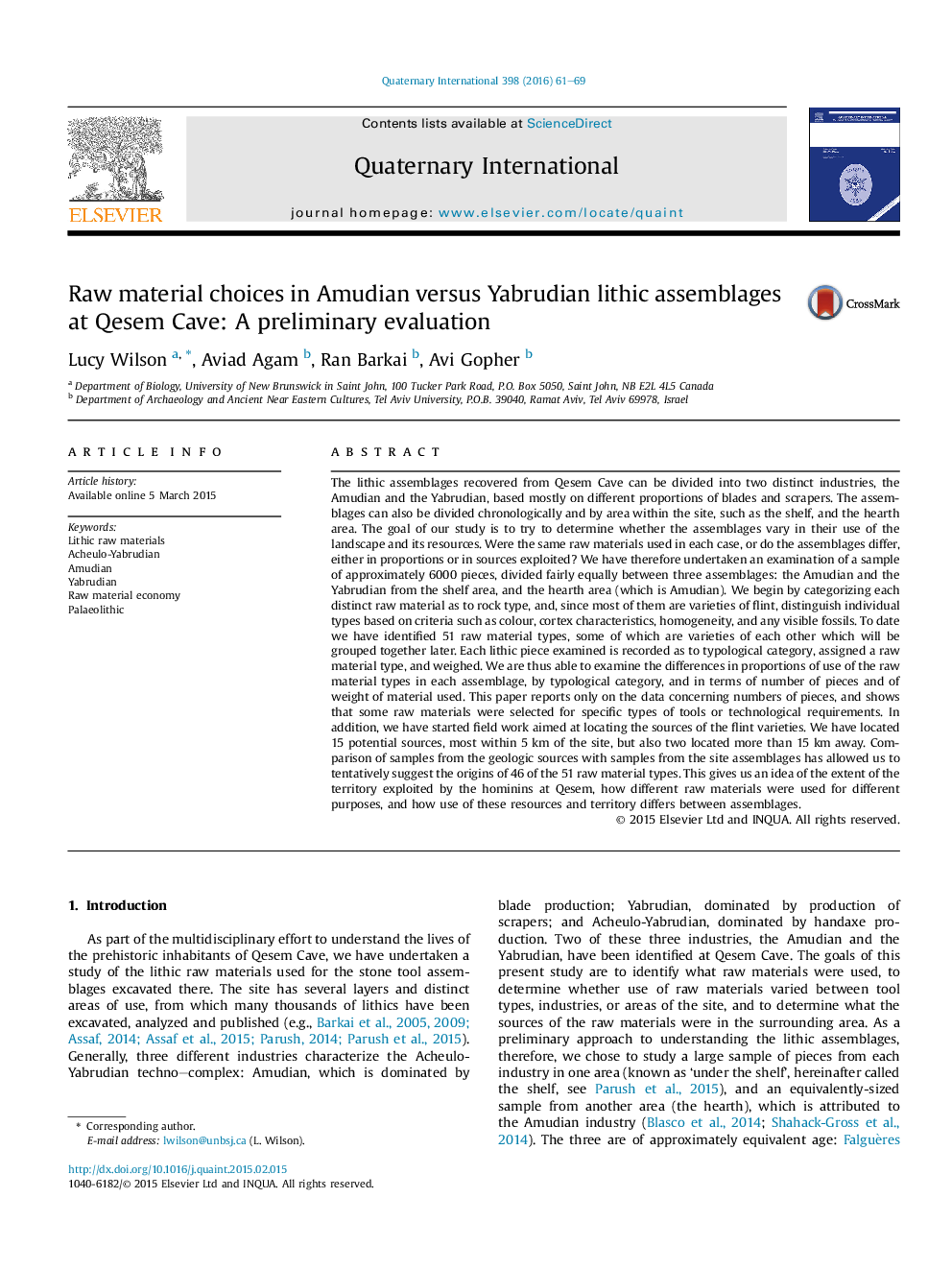| کد مقاله | کد نشریه | سال انتشار | مقاله انگلیسی | نسخه تمام متن |
|---|---|---|---|---|
| 1040283 | 1484100 | 2016 | 9 صفحه PDF | دانلود رایگان |
The lithic assemblages recovered from Qesem Cave can be divided into two distinct industries, the Amudian and the Yabrudian, based mostly on different proportions of blades and scrapers. The assemblages can also be divided chronologically and by area within the site, such as the shelf, and the hearth area. The goal of our study is to try to determine whether the assemblages vary in their use of the landscape and its resources. Were the same raw materials used in each case, or do the assemblages differ, either in proportions or in sources exploited? We have therefore undertaken an examination of a sample of approximately 6000 pieces, divided fairly equally between three assemblages: the Amudian and the Yabrudian from the shelf area, and the hearth area (which is Amudian). We begin by categorizing each distinct raw material as to rock type, and, since most of them are varieties of flint, distinguish individual types based on criteria such as colour, cortex characteristics, homogeneity, and any visible fossils. To date we have identified 51 raw material types, some of which are varieties of each other which will be grouped together later. Each lithic piece examined is recorded as to typological category, assigned a raw material type, and weighed. We are thus able to examine the differences in proportions of use of the raw material types in each assemblage, by typological category, and in terms of number of pieces and of weight of material used. This paper reports only on the data concerning numbers of pieces, and shows that some raw materials were selected for specific types of tools or technological requirements. In addition, we have started field work aimed at locating the sources of the flint varieties. We have located 15 potential sources, most within 5 km of the site, but also two located more than 15 km away. Comparison of samples from the geologic sources with samples from the site assemblages has allowed us to tentatively suggest the origins of 46 of the 51 raw material types. This gives us an idea of the extent of the territory exploited by the hominins at Qesem, how different raw materials were used for different purposes, and how use of these resources and territory differs between assemblages.
Journal: Quaternary International - Volume 398, 4 April 2016, Pages 61–69
